

Japan, often known to the outside world as one of the most modern countries in the world, is a country that most people are either ecstatic or indifferent about. Seeing as my dad often had to go to Japan for work and told us stories of his travels, my sister and I were always very excited about visiting the country ourselves one day. In this blog post, I’ll share our reasons for visiting Japan and my ABC of our visit to Japan with you.
Latest update: 2 July 2019
Visiting Japan has been a dream of my sister and I for as long as I can remember. This summer, we finally got to board the airplane bound for Osaka and we lived out our Japanese dreams.
I hear you wonder. “But why Japan? Surely there are other beautiful destinations that are closer by and less expensive to visit?” Well, yes. But we had a few reasons for preferring Japan over any of these destinations.
It might not seem like this, since it’s basically an island at the other side of the world. At least if you’re from Europe. However, flying to Japan was a lot easier than you might expect.
What we did is this:
For a destination that is 9,300 km (5,800 miles) away from home, that seems like a reasonable travel itinerary, right?
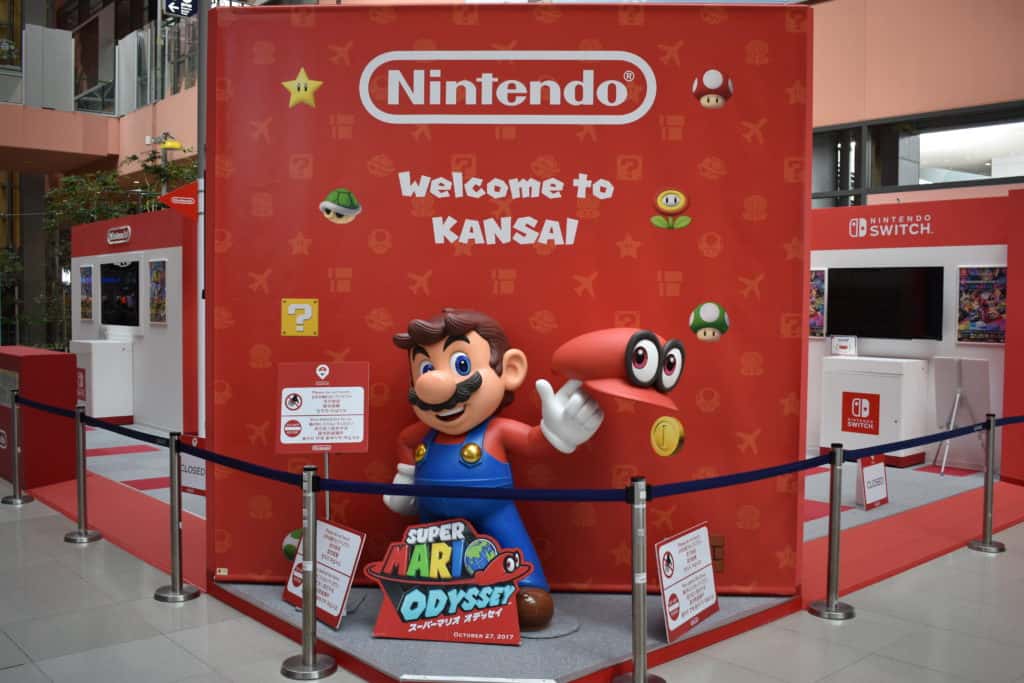
But that’s not the only thing that makes this Asian island an easy destination. You see, my sister and I added another week to our trip. When my parents flew home after our Japan trip, we boarded a flight to Bali.
And although we hadn’t expected to fly another eight hours when we started planning this summer’s holiday, it was extremely easy to get from Japan to Bali. There was a direct flight and we had no problems whatsoever in or around the airport. (We did fail to locate our Wi-Fi device when we arrived in Indonesia, but that’s another story)
Related: How to survive a long-haul flight
At the time of writing this, I’m studying multilingual communication and every single professor tells me something else about the use of the word ‘culture’. It’s being overused, it’s insensitive, it’s a man-made concept that doesn’t really exist, …
You dream it, I’ve had classes about it.
But still: before we started planning this trip, I have always had this idea of Japan as a mythical nation with sumo wrestlers, neon signs, temples and sushi belts.
I’ve always wanted to see whether that image would hold up in reality and how much of it was actually true.
Even when we had just touched down and we were waiting for our bus to the city centre at the airport, there was some kind of culture shock. I know it sounds like a bad thing, but this was more like an ‘I can’t believe we’re here and it’s so different from what I’m used to‘ vibe.
Admittedly, my dad had never gone to Japan for a holiday until we went together as a family. He was always on assignment from the company he works for, and he was always there for business.
Still, though. It was still fascinating to hear him talk about what it’s like to have ramen noodles for breakfast and to be overwhelmed by the number of people in and around the train station, on their way to work. Even just hearing him talk about what it felt like to go to a meeting with Japanese people was eye-opening.
In the twentieth century, Japan was fortunate enough to be the country where an economic miracle took place. After World War 2, the country’s economy was devastated, but it managed to grow tremendously in the period between 1945 and 1990. After this miraculous growth, Japanese demographics stagnated and the workforce dwindled, causing its economic growth to slow down.
The Japanese economy was at one point the second-largest economy in the world, beaten only by the United States. The country is still reaping the benefits of this period, and it’s now globally seen as one of the most technologically advanced countries of the world.
We wanted to see this highly technologised country with our own eyes. And we did.
Admittedly, I wouldn’t have enjoyed about 80% of the food we had in Japan if we had gone on this trip two years earlier. Luckily, we didn’t, and I did end up enjoying most of it.
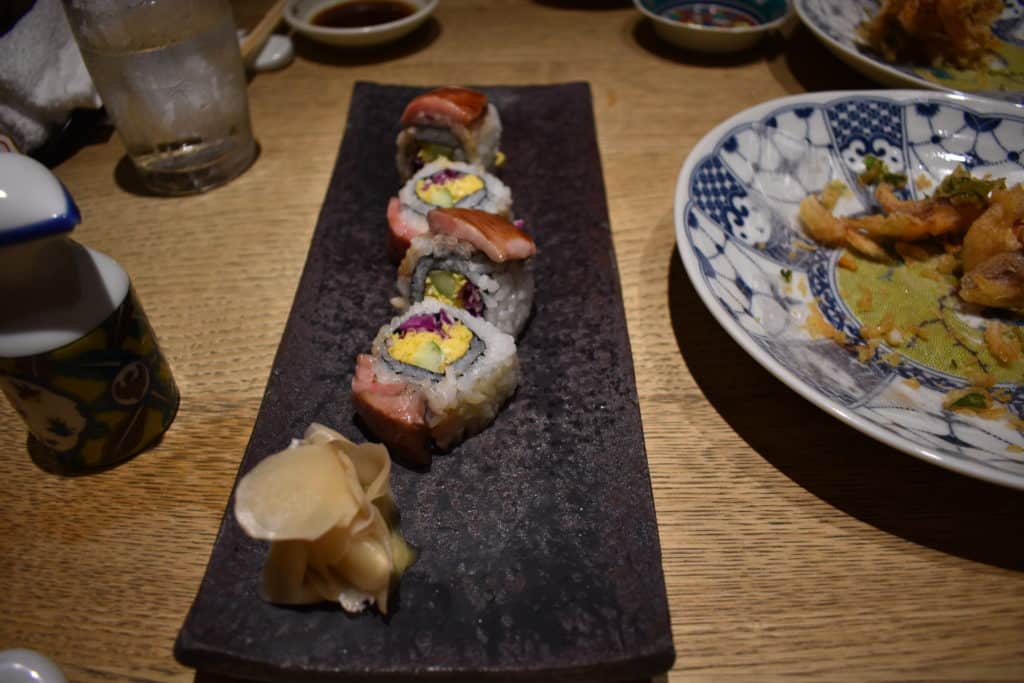
Ramen, takoyaki, sushi and sashimi, okonomiyaki, yakisoba, kakigori, … If you have no idea what I’m talking about, read more about things to know before visiting Japan and look up some pictures of these terms. You’ll want to take the first flight to Japan available.
I feel like Japan is a country that has more prejudices and stereotypes than many other countries. I’m not claiming to be an expert on their personality traits and culture (yes, communication professors, I’m using the word culture again), but I can confirm and debunk *some* of the stereotypes you might have about this country or the people that live in it.
FALSE. Admittedly, sushi is probably the most popular food of Japanese origin in the western world, but Japanese cuisine is much more than just sushi.
A typical Japanese day in terms of meals would look something like this (and yes, I realise I’m oversimplifying this a lot. Don’t sue me please, I’m only trying to convey a message.)
If you have ever experienced a typical Japanese breakfast, lunch or dinner and it’s nothing like this, there’s a comment section below this post begging for you to tell us about it.
Kawaii, as I explain below, is the Japanese concept of cuteness. Anything or anyone that can be considered ‘cute’, such as a stuffed animal, a cartoon drawing or a person, is kawaii in Japan.

Admittedly, if you spend any time in Japan, you’ll quickly find out that this culture of kawaii is much more present than in any other country on earth. However, I still wouldn’t say Japanese girls are obsessed with kawaii.
More specifically, they’re not OBSESSED with it and it’s not just the girls. Although some critics claim that the concept of kawaii has taken over the country and is now rooted in their culture, I disagree.
Also, not only girls like dressing up and being cute. In Japan, it’s acceptable for anyone to exhibit kawaii behaviour. The feeling among men seems to be split about 50-50 between guys who feel like being called kawaii is a compliment and those who would feel offended.
Okay, yes. This one is probably the most true of all.
It’s hard to judge as a foreigner, because it makes sense for any kind of people, including the Japanese, to be reserved towards foreigners. I’m reserved towards travellers when I’m in Belgium.
But still, I went in with the idea of the polite, kind and reserved Japanese person. And that was confirmed on my trip.
Although recent trends have been emerging that are changing that pattern, many people are consciously making an effort to be nice to others. Some people in Tokyo even set up a project to help the people of Tokyo become even more polite.
Japanese people bow before entering a shrine, they apologise when you run into them, they welcome you when you enter their shops, … The list goes on and on. And yes, these might seem like common courtesy to you, but I’m not used to strangers being polite to me for no apparent reason.
Also true. Then again, what’s weird to you may be normal to someone else. Not trying to judge here, but just listing some things that are less common in most western countries.
Here’s a list of some odd things we noticed in Japan:
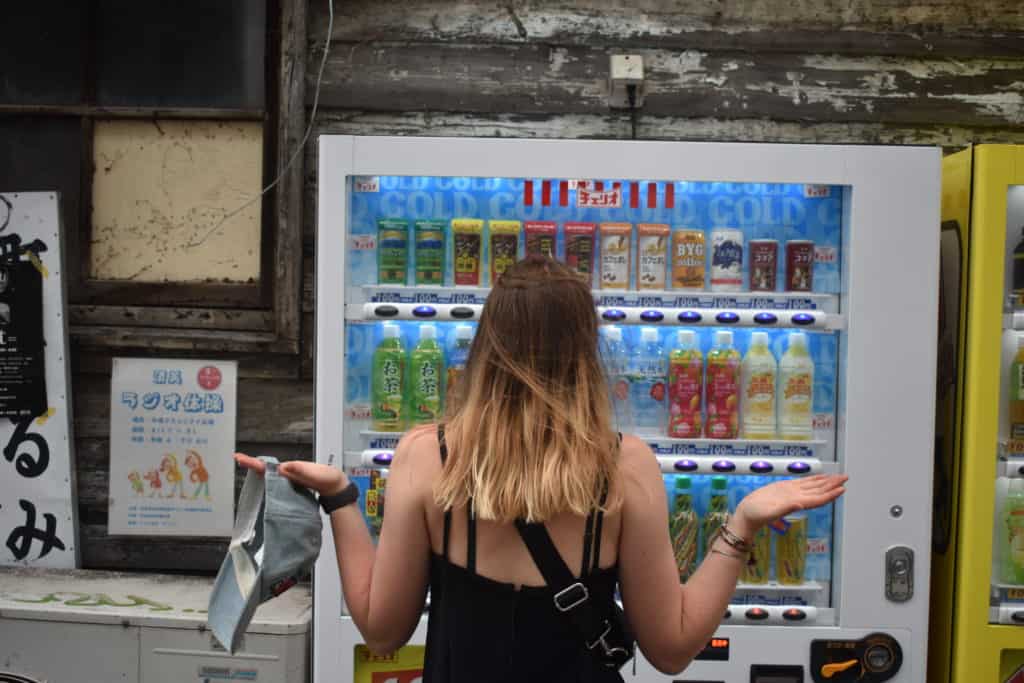
Again, true, and it’s one of the biggest problems Japan is facing nowadays. Their proportion of elderly citizens is among the highest worldwide and that will likely cause the Japanese population to shrink by 30 million in the next 30 years.
Japan is a country with a low fertility rate and a high life expectancy. The large number of old people have a big influence on social policies, such as pensions and long-term healthcare. The Japanese government has started implementing policies to restore the fertility rate and combat the ageing of its population.
Now, for something different entirely. In this last part of the blog post, I’ll try to describe my experience in Japan using the 26 letters of the alphabet, associating each letter with a word or concept that reminds me of what it was like to spend two weeks there.
What better way to start off the ABC of Japan than the Japanese way to say ‘thank you’? During my time in Japan, ‘arigatou gozaimasu’ was essentially the only Japanese expression I felt comfortable saying because it was the only expression I knew.
The religion of Buddhism was introduced to the island in 552 AD by Buddhist monks from Korea. Today, it’s one of the biggest religion in Japan, second only to the traditional Japanese Shinto religion.
The train system in Japan is insane. (See also J is for JR and what you should know before visiting Japan). According to Train-Media, approximately 20 million people commute into Tokyo every single day. Every. Single. Day.
The reason why commuting is so popular in Japan is because rent in big cities is very expensive, and especially in Tokyo prices are insanely high. As a consequence, many people decide to live in the suburbs, where rent is affordable, and commute to work every day.
As one of the most vibrant areas in Osaka, Dotonbori is one of those places that has to be included in your Osaka itinerary.
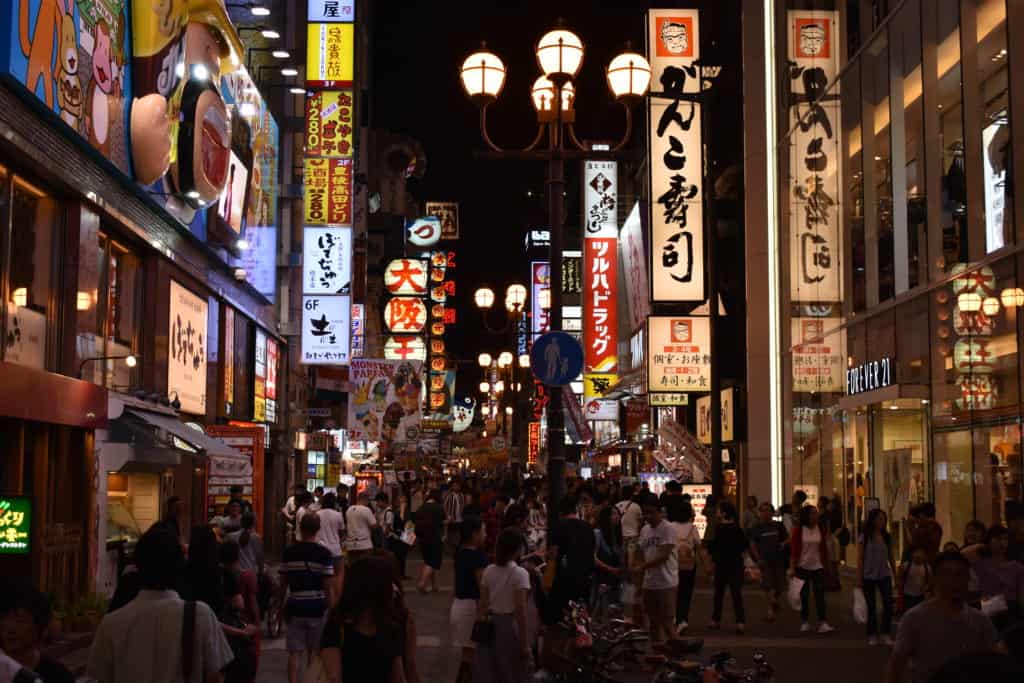
I could literally eat edamame for days. In case you’re unfamiliar, edamame are steamed immature soybeans that are served in the pod, often with salt. In Belgium, we always get a serving of edamame when we get takeout sushi and it’s uh-ma-zing.
It seems like big cities in Japan include department stores like Hankyu, Daimaru and Loft on every street corner. Every department store we visited included a full floor dedicated to food, usually the ground floor and/or the basement. These floors are known as food courts, where you can find all kinds of fresh food.
If you haven’t been to Japan before and you’re imagining what the country is like, chances are geishas are included in that image. Although you might not know the word, you’ll definitely know how they look.
A geisha, literally translated as ‘entertainer’, is a woman who wears traditional costumes and makeup and entertains people (usually men) through performing art, music and dance. Contrary to popular belief in the west, geishas are not prostitutes.
One of the most important concepts in Japanese culture, as you’ll quickly come to realise after spending some time there, is honour. It’s so important to the Japanese that they even have a linguistic system of honorific suffixes to refer to others in conversation.
In Japan, incense is burned at the entrance to every temple. There’s a special Japanese ‘way of incense’ called Kōdō. Similar to a tea ceremony – where incense is also often burned, by the way -, there are specific rules about how to prepare and appreciate incense.
Japan Rail, or JR for short, is the main means of transport on the island. It comprises seven companies that run a network of trains, spanning all the way across the country.
In case you’re wondering how JR trains work – yes, it is quite confusing – check out ‘A quick guide to taking the train in Osaka‘.
Kawaii is the culture of cuteness in Japan. It refers to anything or anyone that can be considered cute or charming. As mentioned above, kawaii is a huge part of Japanese culture and it’s ingrained in most people who live there.
They really do love their lanterns over there. As you can see in this video.
Matcha tea is the central element in traditional Japanese tea ceremonies. Matcha tea is green and has a very specific and peculiar preparation guidelines. Today, matcha is also often used to add flavour to various sweet dishes, such as ice cream, latte and mochi.
Ever wondered why Japanese cities are so big and densely populated? It’s because of nature. A whopping 73% of the country’s area is uninhabitable, which means that almost all Japanese people live on 27% of its landmass.
Of course, that means that the island has an enormous amount of nature for travellers to explore.
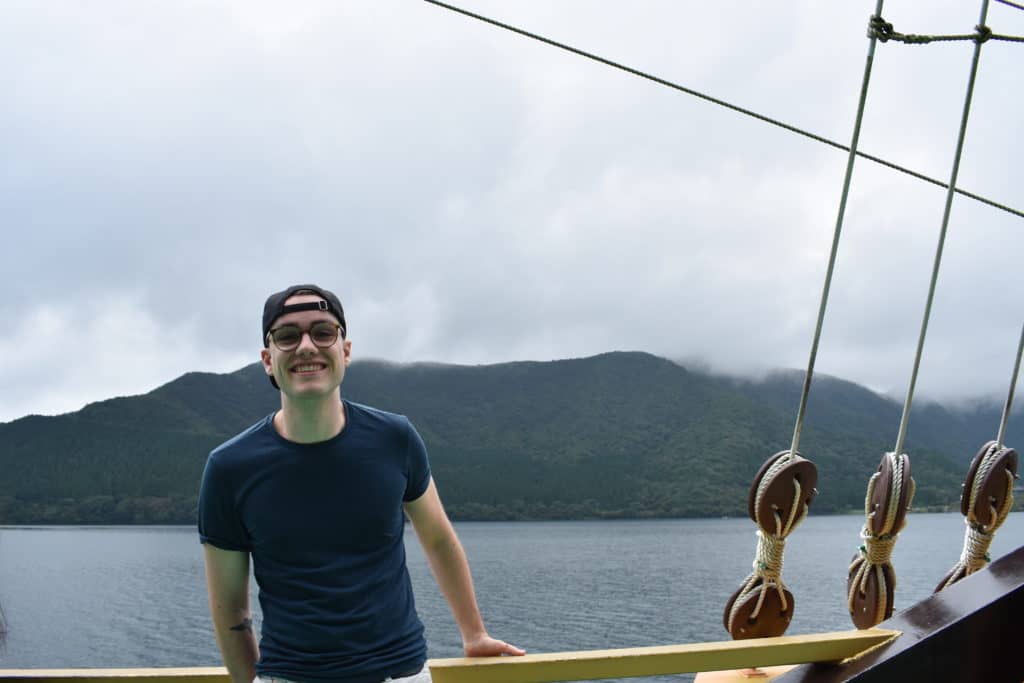
Osaka is the third biggest city in Japan. And it’s also a hell of an operating base for day trips due to its central location within the country. Fun fact: Osaka is known among the Japanese as the ‘nation’s kitchen’ for the many delicacies that are produced in the city.
Ahhh, pachinko. Japan’s answer to the gambling ban. Huge pachinko halls can be found in all major cities, usually on dedicated pachinko floors in arcades or as a standalone building.
The point of the game was never really clear to me, but it has something to do with small metal balls that you put into a machine and more metal balls come out. Don’t ask me.
Yes, it was very tough to find a word that started with a Q and had anything to do with Japan. Please just roll with it.
Quail farming industries provide the Japanese with meat and eggs. They’re so popular because the animals grow quickly, are easy to manage and produce eggs at a high rate. The meat serves as a viable protein-rich alternative to chicken.
When I say ramen, I’m not talking about the packets of instant ramen you can buy for 30 cents at Walmart. No, I’m talking about carefully crafted bowls of heaven-sent savoury noodle soup. I had the best bowl of ramen of my life in Tokyo. I’m not exaggerating and I’ll probably never eat ramen that comes close to that one bowl again.
Even if you’ve never heard the name before, you know what Shibuya Crossing looks like. It’s the busiest pedestrian crossing in the world, located in front of Shibuya Station, one of the main commuter hubs of Osaka.
Also: there’s a statue of Hachiko between the crossing and the station and the Starbucks café overlooking the crossing is one of the busiest in the world.
Takoyaki is a very popular street food in Japan, especially in Osaka. It consists of wheat flour-based dough, egg and minced octopus and it’s grilled on a special plate that makes it ball-shaped. I personally don’t love the taste of takoyaki, but I can see why it’s such a popular snack in Japan.
Udon, like ramen, is one of the many popular Japanese noodle varieties. It’s usually served chilled with a soy dipping sauce in the summer or in hot soups and other dishes in the winter. They’re the thickest variety of noodles that is served in Japan.
Japan wouldn’t be Japan without their world-wide image as video game pioneers. Many distinguished game companies, such as Nintendo, Sega, Square Enix and Konami, started in Japan and are still headquartered there.
Today, the fact that video gaming is such a big industry in Japan is reflected in the many enormous entertainment halls, arcades and game centres that can be found in all major cities.
Wasabi is to sushi what peanut butter is to jam. The Japanese usually serve wasabi in the form of a spicy green paste and use it as a condiment in sushi and sashimi dishes. Sushi chefs put the wasabi between the rice and the nori when preparing sushi, in order to preserve its flavour.
Again, X is an incredibly difficult letter to find words for. X-ray fish don’t really have anything to do with Japan, but if you have any suggestions for what to put here, feel free to let me know. Don’t hate me for this please.
Pristella maxillaris, more commonly known as x-ray fish, are a species of fish famous for their translucent body.
Who could have anything against me talking about Japanese food? (Hungry people who like Japanese food, Sander. That’s who.)
Yakisoba is a Japanese noodle stir-fry dish that mainly consists of soba noodles, oyster sauce, pork and vegetables. This was one of the first Japanese dishes I came in contact with as a kid and I loved it right away. I still love it just as much today, if not even more so.
Seems like a nice place to end this blog post. Zen. Do I really need to explain this?
Japan is the country of sushi belts, Shibuya and Starbucks. If you’re still not convinced of the country’s intrinsic value as a tourist destination after reading this, there’s really nothing else I can tell you.
To everyone who made it all the way to the end of this blog post, thank you very much for taking the time to read everything.
What’s your favourite letter in the ABC of Japan? Let me know in a comment!
Thanks for reading!
-S
PIN IT!




Collecting my stories on this travel blog has changed the way I travel. There’s no doubt about that. I’ve been choosing different locations and different travel activities, as well as making other small changes to my way of travelling.
Basically, I’ve been travelling all my life. I believe that my current love of travel is the result of dozens of small trips I took with my family, with friends and by myself. I’m also convinced that this love will only grow in the future and will lead me to even more amazing experiences.
My first big experience with travel was at four years old.
I went skiing with my parents and my sister in Austria. The thing is, I don’t remember a lot about this trip, but it was still a big, influential moment for me.
Since that trip, we went skiing almost every year until I was about seventeen. Our yearly family ski trips were a week of intense bonding and having fun plowing through the snow. I loved every single second of it, down to the sugar rush from all the candy we ate during the long car ride.
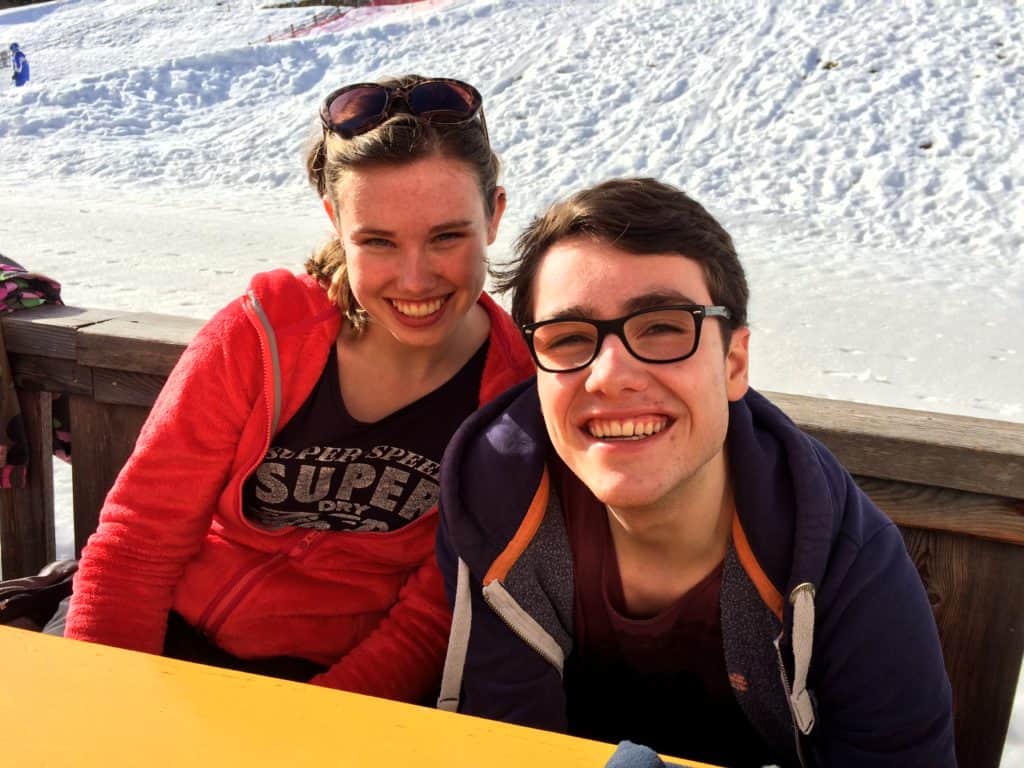
At this time, I wasn’t thinking about pursuing travelling as a career at all. I wasn’t looking at travel blogs or watching travel videos. I just knew that we went skiing every year, and I knew that it was going to be as much fun as each year.
As soon as my sister and I were about seven years old, our family travels became more than just the yearly ski trips.
The first big travel-related experience, beside skiing, was the first time I took an airplane to another country. One of the first times my family and I travelled together was a short trip to Sevilla (Spain), where we visited friends of our parents.
At the time, I didn’t speak a word of Spanish (Why would I?). Additionally, the Spanish are notorious for not being the best at English. As a consequence, the entire trip was quite confusing for me, as I had to rely on my parents to understand what was going on.
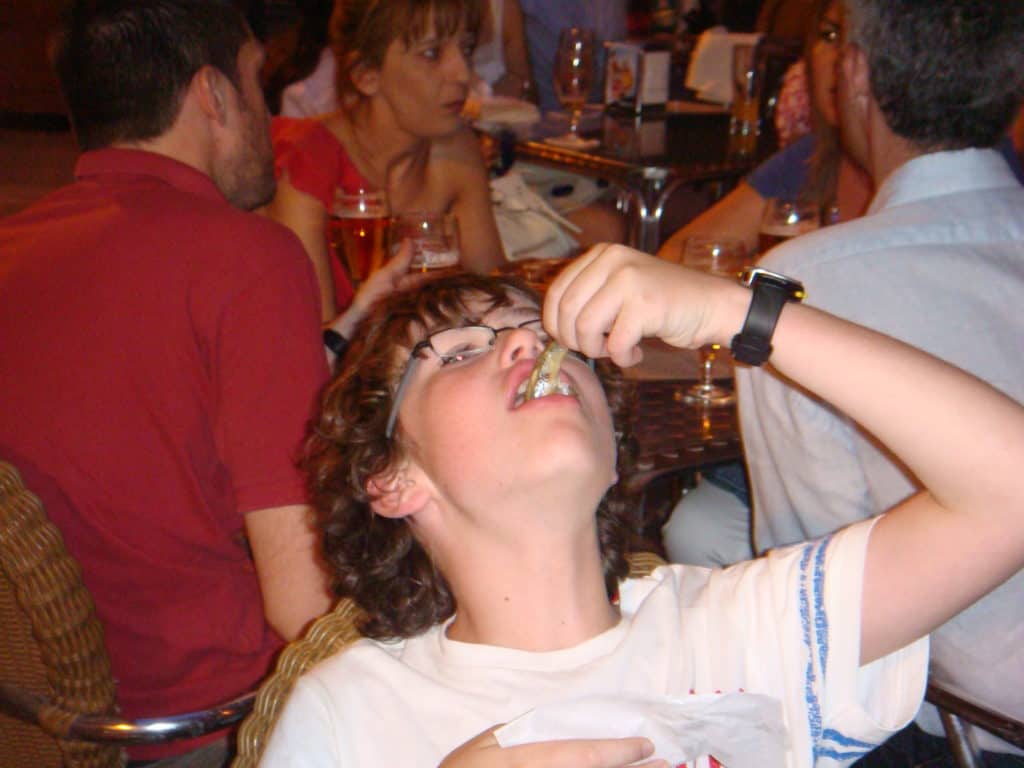
Other than that, I loved it. I loved eating boquerones with my head in the air, I loved eating the fruit from my mom’s sangria (and thinking I was drunk) and I loved the feeling of sunshine on my face.
Since then, we’ve had many of these small family trips during the summer. Some destinations that spring to mind are London, Paris, Porto, Venice and southern France.
For me, the big turning point between being a family-dependent traveller and being an independent traveller was my first solo trip to Dublin. Even in a non-travel-related context, it was a big moment in my life. It was the first time I spent five days in a foreign city, with nobody to keep me company but myself.
It was also the first time I could truly do everything I wanted to do. I didn’t feel forced to do things I wasn’t really feeling up to. That’s why my trip to Dublin sparked my interest in solo travel.
I started getting more serious about travelling when I went to university in 2015. Beside summer vacation, I only had one week where I didn’t have any classes and I didn’t have to study for my exams. And I wanted to make that week count.
I started blogging in January 2017 and my first blog post was atrocious. I actually started blogging on the free version of WordPress, where you don’t get your own URL (which I do now). After a few days I quickly realised that I’d need to upgrade to the self-hosted version of WordPress and get my own web host.
Looking back on my first blog posts now, I feel it’s safe to say that my English and my storytelling skills have both improved drastically.
The first thing I really blogged about was my Dublin trip. As someone who was new to the travel blogging world, I was trying to find a niche for my blog. And I still am, honestly. That was one of the reasons why I decided to give solo travel a try. And I’m very happy that I did.
Recently, I’ve also become more intrigued by travelling off the beaten path. My reasons for doing this are very selfish. There is already an abundance of travel bloggers. It’s a very competitive niche and it’s incredibly difficult to get your name out there. I want to create interesting posts about things that haven’t been written about a lot.
This evolution in my travel style went hand in hand with the fact that I was starting to capture my adventures in short travel videos. I wanted to make unique, one-of-a-kind videos. After all, nobody wants to see another video of the Eiffel Tower and the Champs-Élysees. Today, I actually prefer making videos over taking pictures when I’m travelling.
In the last few years, I’ve become increasingly more excited for future travel opportunities. I strongly believe that starting my blog has played a big part in that.
I find myself browsing through flight comparison websites, googling possible travel destinations and reading travel blog posts about places that I had never even heard of.
Luckily, one of my best friends (with whom I’m going to Slovenia in September, by the way) is just as excited about travelling as I am. She’ll often just send me a video or an article about some destination we’re both thrilled to see.
By writing about my past experience with travel, I become more excited for future trips. Even just reading blog posts I’ve published in the last year and a half makes me ridiculously excited to be on the road again.
I want to take every opportunity I get to travel. I don’t want to waste any time because I won’t be this young forever. Life is passing me by, and every time the sun goes down is another day I could spend travelling.
A travel blog won’t only impact your style of travelling in huge ways. There are some smaller ways that are harder to notice in which my travelling has changed.
This travel blog has changed the way I travel, and I’m sure it will continue to do so. If you’re looking for a reason to start a travel blog yourself, beside being able to keep friends and family at home updated about your travels, this is it. You’ll be more conscious and live in the moment while on the road.
Have you ever considered starting a travel blog? Do you already have one? Let me know in a comment!
Thanks for reading!
-S

I’m 21 years old and I want to move abroad. Really get to experience a culture that is different from the one I grew up in. I realise those are bold ambitions for someone who hasn’t even graduated university yet, but that’s just where I stand at the moment.
Latest update: 29 November 2018
My four months in Salamanca were some of the best months of my life. I met incredible people, experienced things I never thought I would and it was generally just an amazing time.
If you’re still hesitating as to whether or not you should study abroad, do it. When you live in another country as a student, nothing is holding you back from living your absolute best life.
My semester in Spain gave me the confidence that I’d be able to survive in a foreign environment by myself. Even though I’m still just a college student, I feel ready for this chapter of my life.
Before I moved to Spain for school, I was very afraid that I wouldn’t be able to make any friends. My sister can definitely attest to that, as I actually asked her questions like “But how do you make friends?” Little did I know it would be as easy as it was.
Turns out that I actually love the excitement of starting over in a new city, with people you’ve never met before and countless places you haven’t been to. I want to feel that excitement again.
I do realise that most people who say they want a fresh start are dealing with some serious problems. The same can’t be said for me, as I have everything I need and want right here. Except the feeling of adventure.
I don’t want to be dying and realise I haven’t really lived my life. Life has a lot to offer and I don’t want to pass on the opportunity to experience it.
Have you ever heard someone say “You only regret the chances you didn’t take”? If you don’t take the leap of faith, you’ll always wonder what could have happened.
Even if you do go for it and it’s not what you expected, at least you can look back and sleep easy knowing that you gave it everything you had.
I want more than a nine-to-five job where I barely get to leave the office. I want to go out for hikes and explore the surroundings of my new home.
Of course, I do realise that the odds have it that I’ll get an office job as an expat anyway. However, an office job in a foreign country is still ten times more exciting than an office job at home. To me it is, at least.

I strongly believe that the only way to get to know a culture is to drown yourself in that culture.
After living in Spain for one semester, I still don’t feel like I know everything there is to know about the Spanish culture. As expats often live abroad for longer periods of time than that, I think it would be the perfect opportunity to enrich my life.
An expat will likely never be as integrated into the local culture as an actual local is, but that doesn’t mean it’s not worth a try.
I’ve talked about this before. And I’ll talk about it again.
To me, it’s extremely important to figure out what my comfort zone is. Where I’m most comfortable, where I don’t have any stress and where I can settle down. I want to know this because I want to break out of that comfort zone.
The only way to grow as a person is to handle things you have no idea how to handle.
Travelling and being abroad has a way of making you do things you never thought you’d be doing. Among those things might be the one thing you’re passionate about and you might want to follow that passion for the rest of your life.
I’m still trying to find my passion.
Of course, for every reason to move abroad, someone will come up with a reason not to do it. And of course, I do realise that life as an expat isn’t all fun and games. There are times when life will be challenging and throw things at you that you have no idea how to handle.
The truth is, I’m afraid to move abroad. But all that does is tell me it’s something worth pursuing.
Read more about why fear is a sign you’re doing the right thing.
The biggest drawback of moving to another country and starting over is that you have to leave your entire life behind.
Yes, you can make friends abroad. It might even be easier to connect with fellow expats because you both have nobody else. But the real problem is that your true friends will always live in another city, country or even continent. You can never just casually hang out with them and tell stories about people you both know.
When my time of leaving to another country comes, I’m convinced that a majority of my friends will try to convince me that we’ll stay in touch. Sadly, I just don’t think that’s going to happen.
I also believe that some of my loved ones (family rather than friends) will feel guilty for my leaving. They might think that they weren’t offering me enough adventure.
Family and friends, if you’re reading this, I love you dearly. However, I just don’t feel like I’m going to stay in Belgium for my entire life.
When I left for Spain, I was prepared to feel lonely and confused. And, to some extent, I wasn’t even close to having anticipated what I actually felt like.
It was a kind of “both sides of the spectrum”-deal. For the first few days, if not weeks, I couldn’t help but think “What have I done? I don’t belong here”. Salamanca was nothing like what I had expected and I wasn’t sure if I even wanted to continue.
However, after some weeks, as I got to know more and more people, I really started to find my place within the student community. I realised that every single one of the Erasmus students felt the same. I was one of hundreds in the same boat.
That being said, I’m not as afraid of being lonely as an expat because I went through that experience as an Erasmus student. Yes, I’ll have to get acclimatised to my new surroundings, but it’ll be more than worth it.
Again, this is not as big a fear as it is for some people, as I’ve never been that bothered by what other people think of me. However, for myself, it’s obviously much more pleasant to live in a community where you truly feel like you’re a part of it than to feel like an outsider all the time.
I know that it’s incredibly difficult for expats to fit in with the locals, because they’ll always be seen as outsiders. Nevertheless, there is a substantial expat community in most major cities where I’m pretty confident I’ll find my place.

In short, no. I’m not ready to move abroad. Then again, are you ever?
The main thing that’s holding me back at the moment – aside from the fact that I’m only 20 years old – is money. I currently don’t have a steady source of income and I don’t have enough money saved up to survive abroad for a few months before I can get settled.
However, I don’t want to put off my move abroad forever. As I said, there will never be a perfect time to do it so I’ll just have to suck it up and deal with the problems as they come up.
I’m going to go with the flow, take a leap of faith and see where this crazy thing called life takes me. Remember this blog post when I’m sharing my life story with you from Canada, Austria, Ireland or wherever I end up.
It’s ambitious, but damn it, what’s the meaning of life if not to chase adventure and follow your dreams?
Thanks for reading!
-S

I can hear you think it. “Another travel bucket list? What is going on here?” Trust me, you won’t regret reading this. This one is different. As opposed to the last travel bucket list I posted, this one won’t list (a lot of) specific destinations. Instead, you’ll find a series of special adventurous activities. You might even get some inspiration or find some cool travel ideas here. So grab a drink, settle down and enjoy the show.
One of the things I try my very best to pursue while I’m on the road is chasing adventure and doing unique things. Basically, I try to take the path less traveled. On my quest to find this, I’ve come across a number of adventurous activities I have never experienced. I fully intend to one day get to doing them, and I will keep you updated when I do. Until then, let me tell you about them!

For starters, I’d like to share some thoughts on the concept of fear. Some things in life are terrifying. But being afraid of those things is a sign you’re doing the right thing. I’m absolutely frightened at the thought of doing some of these things.
What if the rope snaps? What if my parachute won’t open?
After some pondering about the answers to these questions, I started realizing that I shouldn’t even be worried about it. The sole fact that I’m scared beyond myself of doing things tells me that it’s going to be worth it.
I’m not afraid of knitting scarfs. Nor have I really gotten any real satisfaction out of knitting a scarf, no matter how beautiful it was (yes, I actually have done this before).
I was afraid of traveling alone. After going to Dublin without anyone else, I wasn’t anymore. Not everything went the way I had planned it, and that’s okay. Even better: I was proud of what I had done and I couldn’t wait to tell people about my experience.
Now that we’ve got that out of the way, let’s take a look at some exciting, terrifying adventure activities.

Credit: David Ramos (Getty Images)
La Tomatina is a yearly event in the city of Buñol (Spain). On the last Wednesday of August, people come from all corners of Earth to get together for one of the world’s biggest hour-long food fights and throw tomatoes at each other. The festivity in itself doesn’t have any purpose except entertainment.

Credit: Sandid (Pixabay)
It just seems incredible to be able to feel the way a bird would experience the world. No worries, no boundaries… Only freedom. Of course, this is not something to recommend to someone suffering from severe fear of heights.

Credit: WaltiGoehner (Pexels)
Again, not really an activity for those vertigo people. If you’re not one of those people, though, you might be like me. I want to try all kinds of cool things, like bungee jumping. I’m sure that once I’ve tried it, I’ll want to go more and more extreme. Oh well, we’ll see what the future brings.

I actually found out about this hiking trail after looking online for travel inspiration. I stumbled upon an article by Bored Panda about the Mt Huashan plank walk and I decided that I wanted to do this some day. It looks like you can’t feel more alive than when you’re hiking there. I can’t wait.

Credit: Skeeze (Pixabay)
When one of my best friends got a skydiving voucher as a birthday gift, he was hyping me up all day, every day. A couple of weeks later, he actually did get to it, and now he’s looking into getting his own permit to do it without someone else going with him. That must mean that it was fun. Probably even a bit more than just ‘fun’. Which is why I intend to do this as well. (If I wait a couple of years, he might be able to take me with him).

Does this picture really even need an explanation as to why I want to go here?
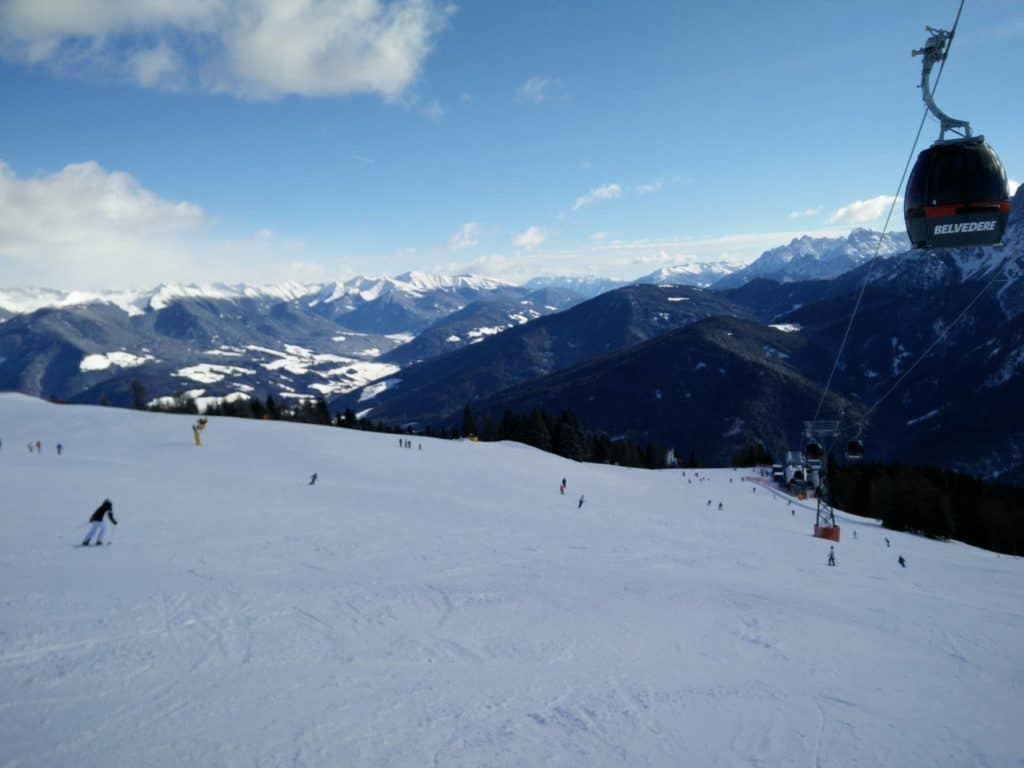
I mean, how could anyone not like this?
This one is a little bit different than the others, because I’ve already gone skiing. A couple of times. It feels amazing to glide down the ski slope along with people you don’t know. Hearing the snow crack beneath your feet is something you can’t explain, but you have to experience. That being said, I wouldn’t mind if this was something I could continue doing for a long time to come.
So, there we have it. These are the most adventurous, thrilling things I want to do and continue doing in the future. Do you have any adventurous activities to add to this? Any comments on my choices? Let me know!
Thanks for reading!
-S
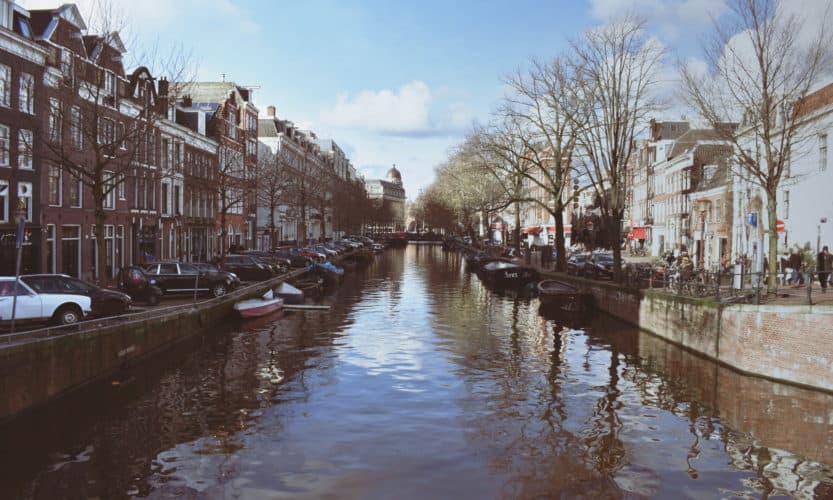
Amsterdam is a city you can always come back to. Whether you’re 16 years old and looking for a place to visit with friends, you want to go on a city trip with your girlfriend of you want to show some of the world to your kids, Amsterdam is the place to be.
Quick tip: for a more concise, easier overview of how we spent our three days in Amsterdam, be sure to check out my new video. (Watch in 1080p!)
Honestly, Amsterdam is probably one of the easiest cities in western Europe to get to from just about anywhere. Schiphol Airport is one of the biggest airports in Europe, the Netherlands have a very efficient public transport system and there are lots of buses and trains that will take you to Amsterdam from nearby big cities.
And that’s what we did. Using FlixBus, we took a bus from Antwerp to Amsterdam. This meant that we had to take a train in order to get to Antwerp. All in all, this one way trip cost us about €20 each. Not too shabby.
Read more: Best Restaurants in Antwerp: The Ultimate Foodie Guide
Of course, considering the fact that I booked the tickets, something had to go wrong. On this trip, the biggest facepalm moment was the moment I realized that I had booked the bus back for the wrong day. But more on that later.
This, however, was not the only mistake I made. You see, in order to get to Antwerp, we had to take two trains. I had a ticket to get from our hometown to Ghent – where we were to transfer trains – but I forgot to buy a ticket to get from Ghent to Antwerp. Luckily, my friend was able to help me out because she had a spot left on her card. God bless her.
After strolling around the streets of Amsterdam, getting lost just a little bit and dropping our bags at our hostel, we met up with my sister.
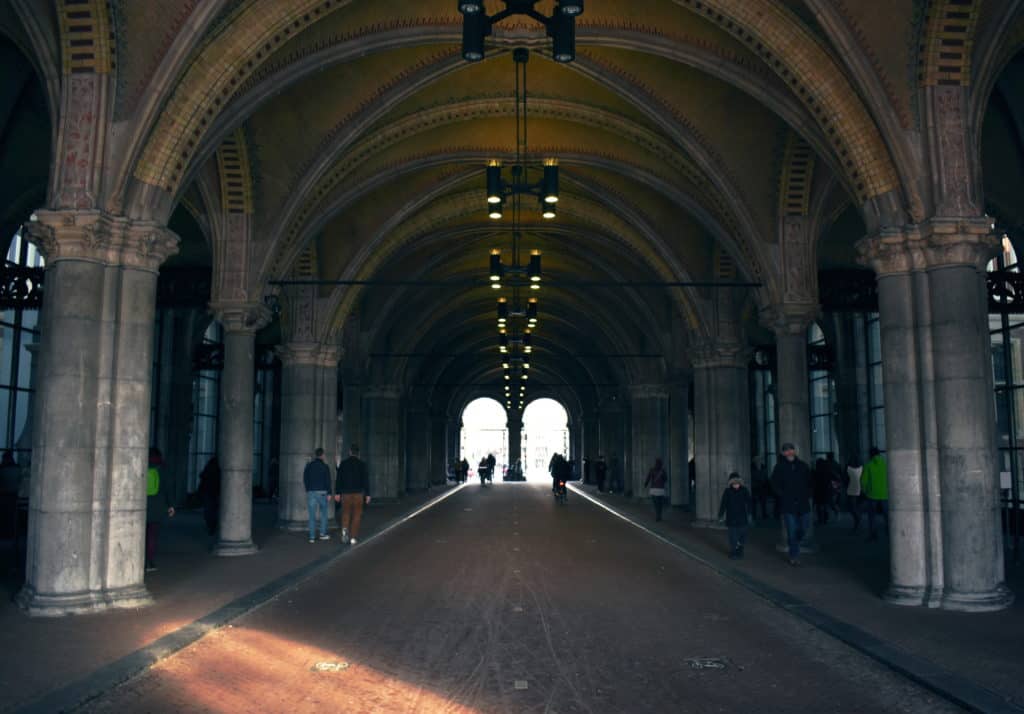
You see, while I was studying abroad in Spain, she was doing her Erasmus semester in Amsterdam. Visiting her was one of the main reasons I decided to go to Amsterdam.
She showed us around a little bit, sharing her favourite hipster hotspots with us. One of those places was Pluk, a cute little restaurant located in what Dutch people call “De 9 Straatjes“. This neighbourhood is known for its picturesque scenery and adorable little shops and restaurants.
After this, we said goodbye to my sister – until the next day – and we went back to our hostel to check in. Fun little fact about StayOkay: I’ve already stayed in this exact hostel three times, and I love it there. I’ll probably even stay here again the next time I’m in Amsterdam. And no, they’re not paying me to say this.
When we got to our room, we found out that there was nobody else there. We had a six-person dorm room to ourselves. And if you’ve ever slept in a hostel dorm room, you know how amazing that is. If you haven’t, you’ll just have to take my word for it.
We hung out in our room for a little bit, unpacked our bags, freshened up and started getting ready for the other reason why we came to Amsterdam.
Yep. We went to a concert in Amsterdam. And it was awesome.
A little bit of background information might be useful here. A couple of months ago, I messaged my friend, asking if she wanted to come to a Quinn XCII concert with me. The thing is, she didn’t know about this guy until I messaged her about this concert.
She looked his music up, and (needless to say, but I’m going to say it anyway) she fell in love. This should come as no surprise, because I honestly feel like my taste in music is pretty good and I knew it would be something she would like.
So, that’s the story of how I convinced one of my best high school friends to come to Amsterdam with me.
I don’t have any footage or (decent) pictures of the show, but I can tell you this. It felt amazing to see an artist singing his songs and pursuing his dreams after following and supporting him for years. I’m very happy that he’s finally getting the recognition he deserves.
It was also my first show in a small venue, which gives it a very different atmosphere than it would be in a big stadium or venue. Everyone there feels like family, because you’re all there to support the same person and you have similar interests.
After the show, my friend and I got a quick snack from the wall, and we headed back to our hostel for a good night’s sleep.
On day two of our three-day adventure, we set out to Coffee & Coconuts (another one of my sister’s recommendations!) for breakfast.
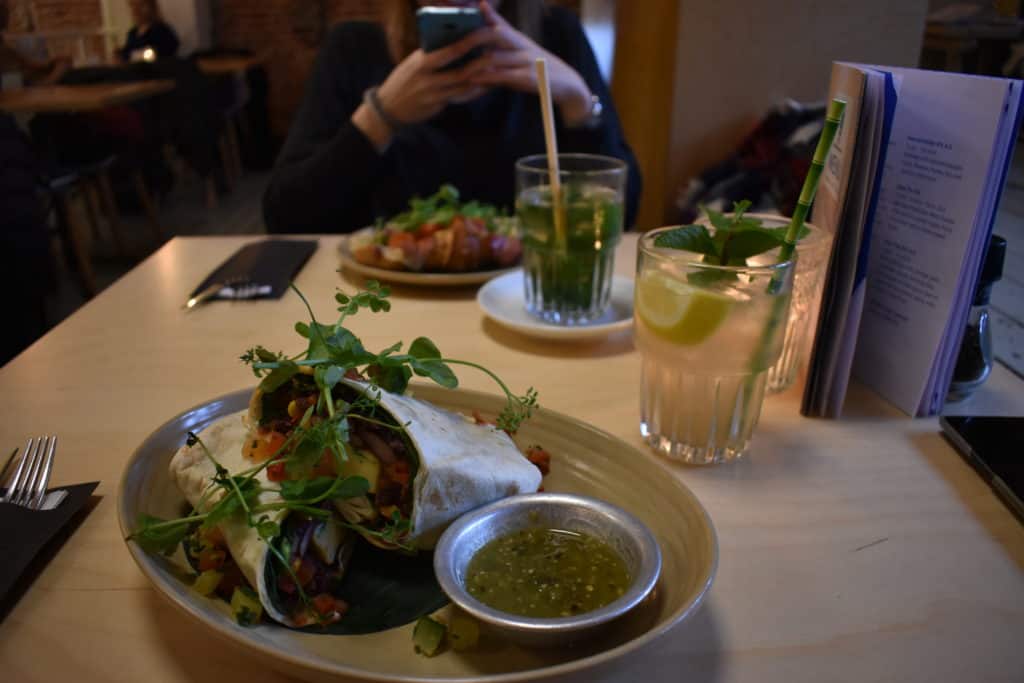
My breakfast burrito in Coffee & Coconuts (Amsterdam)
When we were good and energized, we continued our journey. Pretty much the only thing we had planned for this day was to visit the Albert Cuyp Market, which is said to be the largest daytime market in all of Europe.
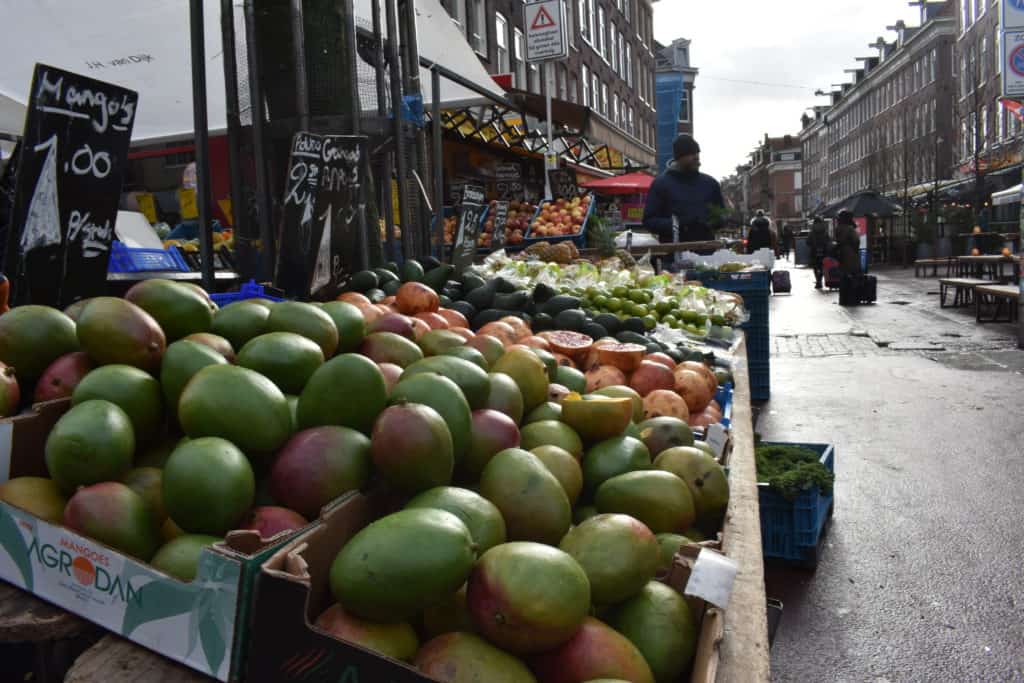
Can I put “photographer” in my Instagram bio yet?
After getting through this street market, we didn’t really know what to do. That’s why we asked one of the vendors where to go, and he told us to visit Waterlooplein, where we would find another flea market. He gave us directions on how to get there and we went on our way.
While walking to this square, we encountered an abnormal number of pigeons. Just thought I’d throw that out there. We also went into a small vinyl and record store, where we stayed and looked at the impressive collection of vinyls in the basement for about 10 minutes.
The flea/street market on Waterlooplein was nothing too impressive, so we continued our journey.
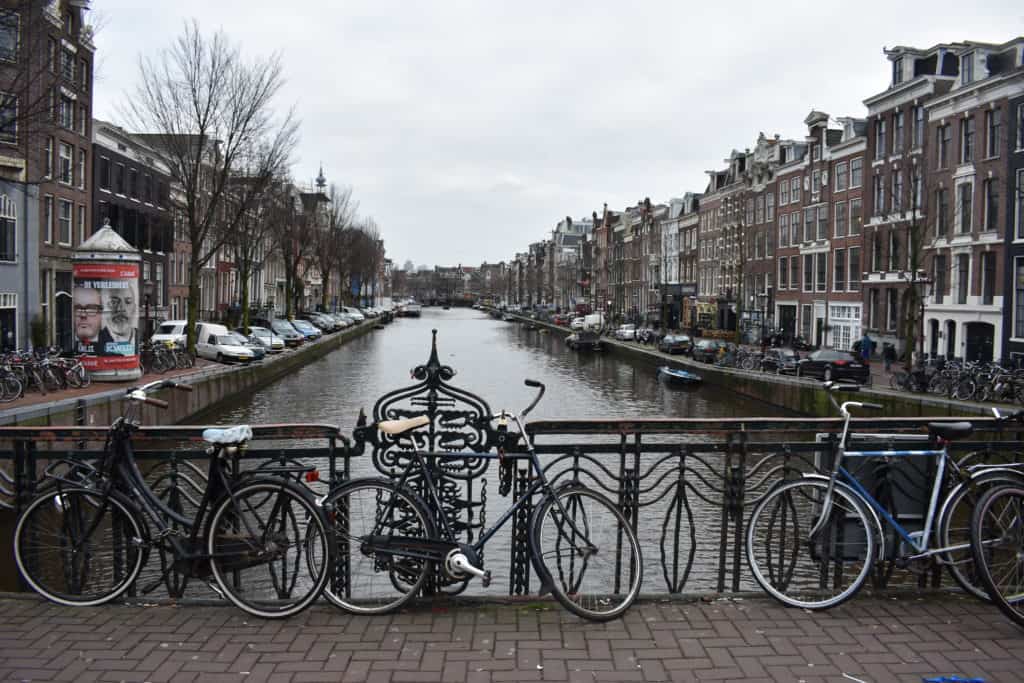
The Amsterdam Food Halls was something we both really wanted to visit. After all, we had both been in Amsterdam before and visited the main tourist attractions. We even did this on the same school trip.
Anyway, the Food Halls can be described as “indoor food markets”. It’s a place where hipsters can get their fix of new, exciting and exotic foods from food stands and trucks.
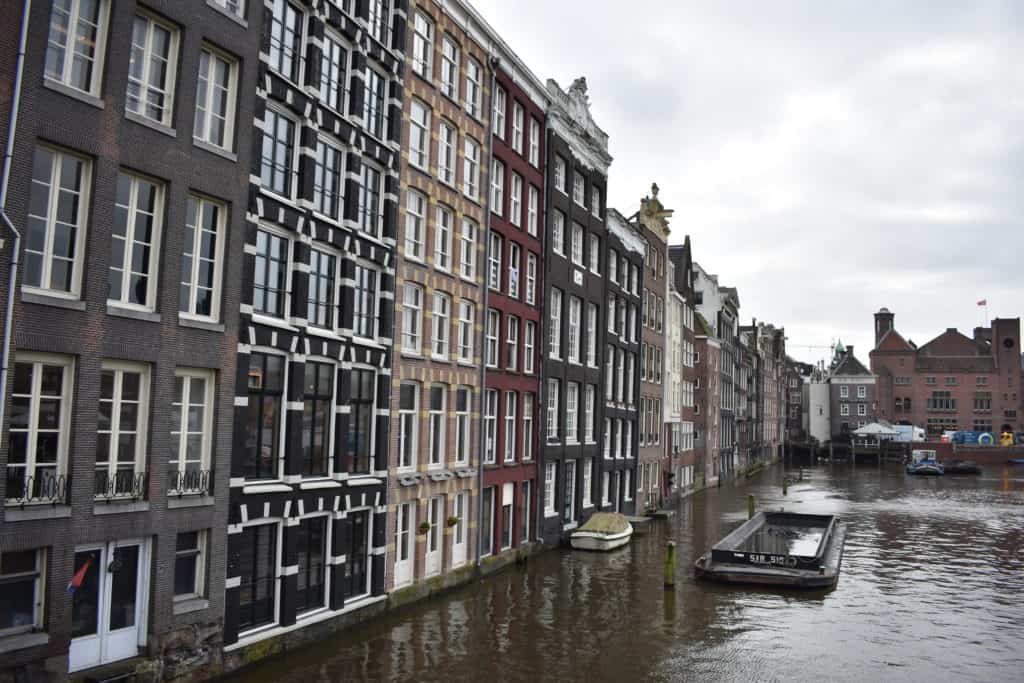
After leaving the food market, we met up with my sister again for dinner. This time, she took us to Cannibale Royale, a restaurant – or “brasserie extraordinaire”, as they describe themselves – known for its wide assortment of meats and burgers.
We all opted for the ribs, which my sister recommended. And God, am I glad she did. They were the best ribs I had ever eaten. I mean, they quite literally fell off the bone when you picked them up. I don’t think it gets much better than that.
When our bellies were full and our moods were lifted, my friend and I went back to the hostel and my sister went back to her apartment. This was when we found out that we would have roomies that night.
Between leaving the food market and going to dinner, we went to a grocery store and we bought a bottle of wine and some snacks to eat at the hostel after dinner. When we went to drop these off at our room, we noticed a suitcase standing near one of the other beds in our room, so we knew that someone was going to be sleeping with us that night.
When we came into the room after dinner, three other people were there. One older Japanese man, a Taiwanese girl who studies architecture in Prague and an Australian guy who was traveling Europe. They were all very friendly and easy-going, and luckily, none of them cared that we were eating and drinking in the room (which we weren’t actually allowed to do).
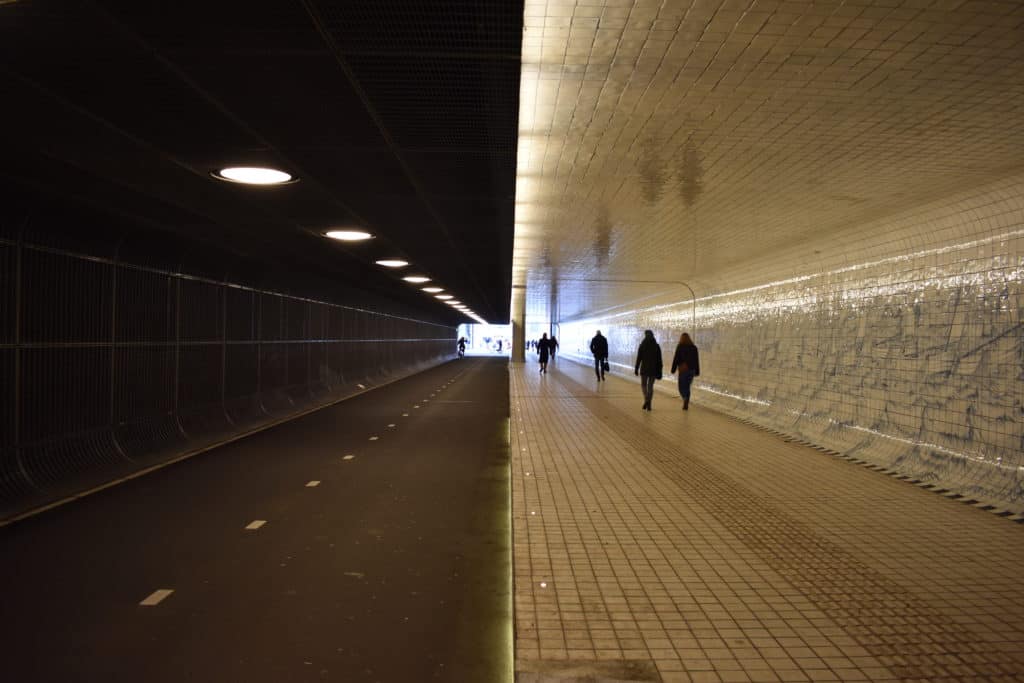
Our last day in Amsterdam, we were supposed to catch a bus back at 5 pm, so we couldn’t do a whole lot. What we were able to do, however, was visit Noord. That’s North in Dutch. It’s the neighbourhood where there’s a lot of graffiti, street art and hipsters. And not a whole lot else.
First, we went to a small islet with the EYE – a museum about cinema and film history – and the Lookout tower – a tower with a 360° view of Amsterdam and the highest swing in Europe.
In order to get to the top of the building, we took an elevator, with a built-in light show. It was actually more interesting than I thought it would be. (You can see this experience in the video)
Of course, we went on the swing.
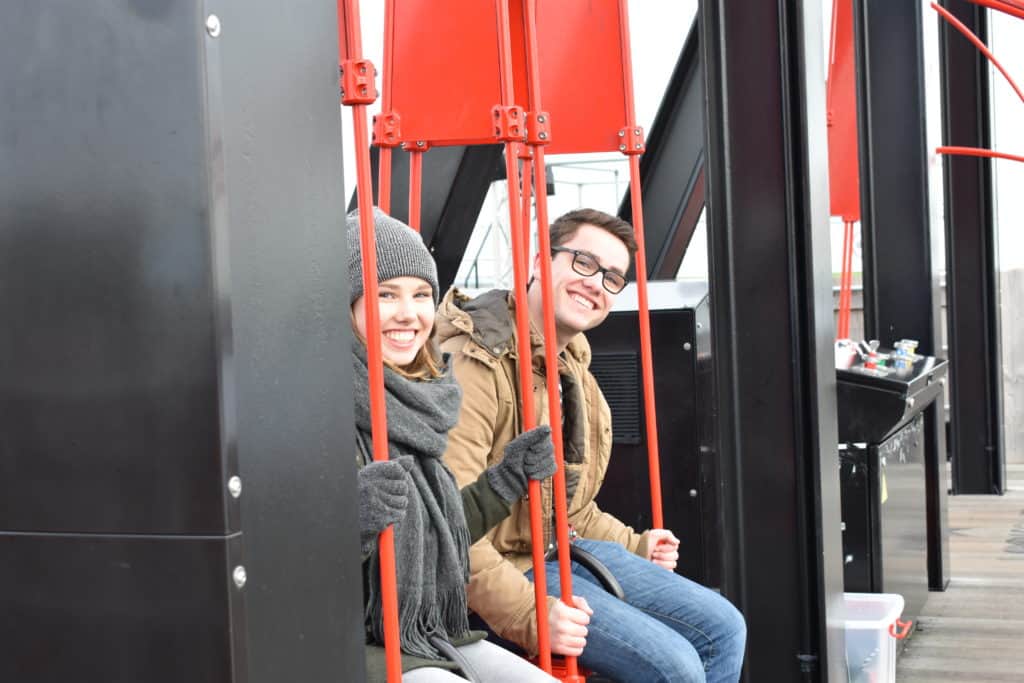
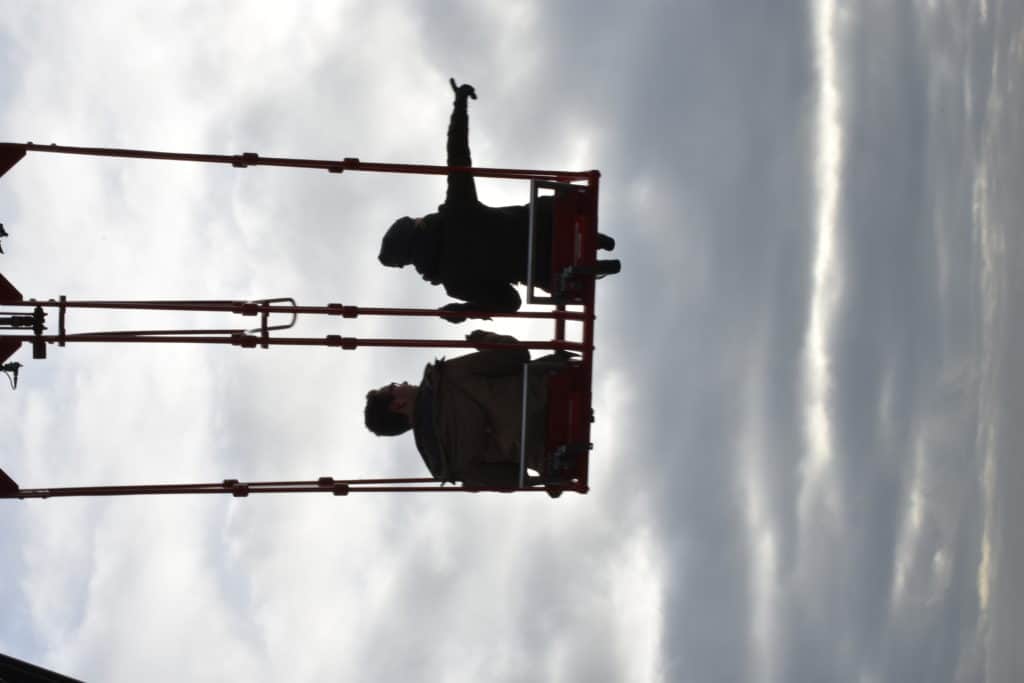
After taking some more pictures up top, we went back down with the same elevator and we were treated to a slightly different version of the light spectacle.
We made our way to an industrial-looking lunch restaurant and had some food. Of course, this restaurant was another one of my sister’s recommendations.
After lunch, we went back to the main part of Amsterdam. My sister went back to her apartment and my friend and I went back to the hostel to pack our bags and chill in the lobby until we had to go.
This is where I tell you the story about how I booked the bus back for the wrong day. You see, I had booked the return ticket for both me and my friend. However, when we were on our way to Antwerp to take our bus to Amsterdam, I realized that I had booked the bus back for 24 January instead of 23.
That’s a bit annoying, isn’t it? My friend made fun of me for about ten minutes (and rightly so, I probably would have done the same). Soon after, I told her I’d fix my mistake that night in the hostel.
Fast-forward a few hours, and we’re chilling in the hostel room that night. I go on the FlixBus website, and try to find a way to undo my mistake. Luckily, I found it. There was an option to re-book the bus for a fee of €6. All in all, a pretty small sum for a pretty big mistake.
We were eventually able to make our way back home safely. I had a lot of fun and chances are I’m going to go back to Amsterdam some day (even though I’ve already been there four times now).
I hope you had some fun reading this blog post. And as always, thanks for reading!
-S
PIN IT!
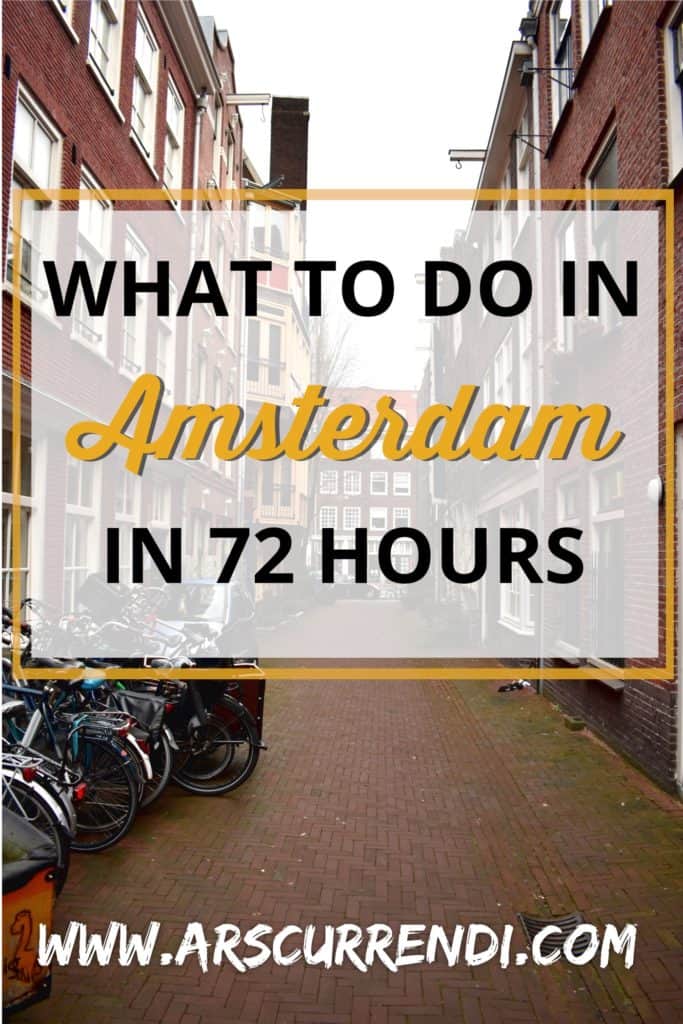
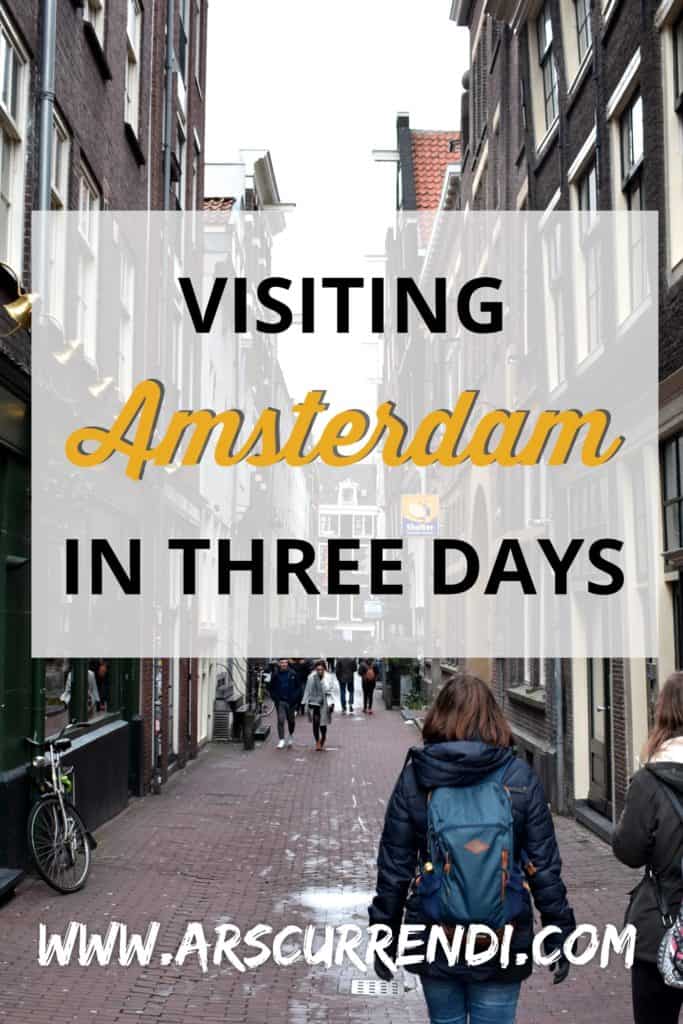
Design by NXNW.